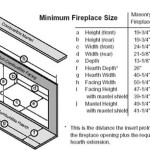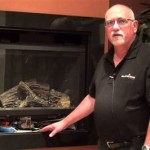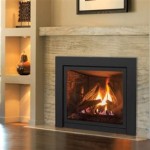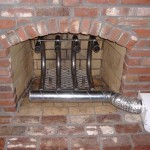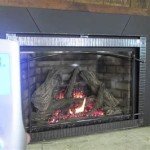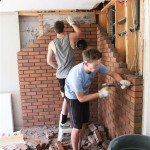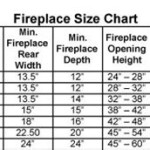Building Code Fireplace Clearance: Ensuring Safety and Preventing Fires
Fireplaces, with their warmth and ambiance, are a cherished feature in many homes. However, the inherent heat and flames associated with fireplaces necessitate careful consideration of safety precautions. Building codes, enforced by local authorities, establish minimum clearance requirements for fireplaces to prevent fires and ensure a safe environment. Understanding these clearances and adhering to them is crucial for homeowners and builders alike.
Fireplace clearance refers to the minimum distance required between the fireplace and surrounding combustible materials, such as walls, floors, and ceilings. This distance is essential to prevent these materials from igniting due to the heat generated by the fire. The specific clearance distances vary depending on the type of fireplace, the materials used in its construction, and the local building codes.
Key Considerations for Fireplace Clearance
Several factors influence the required fireplace clearance, including:
1. Type of Fireplace
The type of fireplace, whether wood-burning, gas, or electric, plays a significant role in determining the necessary clearance. For example, wood-burning fireplaces typically require greater clearance than gas fireplaces because wood-burning fires produce higher temperatures. Gas fireplaces, on the other hand, are designed with safety features that minimize the risk of fire spread.
2. Fireplace Construction
The materials used in constructing the fireplace also affect clearance requirements. Fireplaces made from non-combustible materials, like brick or stone, generally have lower clearance distances compared to those constructed with combustible materials such as wood or drywall.
3. Local Building Codes
Building codes are the primary source for determining the minimum fireplace clearance requirements. These codes are developed by local authorities and enforced by building inspectors. It is essential to consult with the local building department to obtain the specific requirements for your area. These codes can vary from one jurisdiction to another, so relying on general guidelines is not sufficient.
Understanding Fireplace Clearance Requirements
Typical clearance requirements for wood-burning fireplaces include:
-
Clearance to Combustible Walls and Ceilings:
Minimum of 18 inches for standard masonry fireplaces with a non-combustible hearth extension, increasing to 36 inches for fireplaces without such an extension. -
Clearance to Combustible Floors:
Minimum of 6 inches. -
Clearance to Wood Mantels:
At least 12 inches, although 18 inches is generally recommended.
It is important to note that these are general guidelines. Specific clearances can vary depending on the type of fireplace, its construction, and local building codes. For accurate information, consult with a qualified contractor or building inspector.
Safety Measures Beyond Clearance
Beyond adhering to minimum clearance requirements, additional safety measures can further minimize fire hazards associated with fireplaces. These include:
-
Fireplace Screen:
A sturdy screen should be placed in front of the fireplace opening to prevent sparks, embers, and hot debris from escaping. -
Chimney Inspection and Cleaning:
Regular inspections and cleaning of the fireplace chimney by qualified professionals are crucial to ensure proper ventilation and prevent soot and creosote buildup, which can lead to chimney fires. -
Smoke Alarm Installation:
Installing a smoke alarm in the room where the fireplace is located is essential to alert occupants to potential fire hazards. -
Fire Extinguisher Availability:
Keeping a fire extinguisher readily available in case of a fire emergency is a crucial safety measure.
By implementing these additional safety measures, homeowners can further enhance the safety of their fireplace installations and contribute to a safer living environment.
In conclusion, adhering to building code fireplace clearance requirements is paramount to ensuring safety and preventing fires. Understanding the factors that influence clearance distances, consulting with local authorities for specific requirements, and implementing additional safety measures beyond clearances are essential for safe and enjoyable fireplace use.

Fireplace Hearth Extension Rules Structure Tech Home Inspections

Fireplace Construction

Fireplace Mantel And Surround Clearances Fine Homebuilding

Mantel Clearance For Masonry Versus Manufactured Fireplaces
Mantle And Fireplace Surround Minimum Clearances

Fireplace Chimney Clearances Information Canadian
Fireplace Mantel Clearances Jlc

Fireplace Safety And Codes

2024 International Residential Code Irc Chapter 10 Chimneys And Fireplaces R1001 11 Fireplace Clearance

2024 International Residential Code Irc Icc Digital Codes
Related Posts

